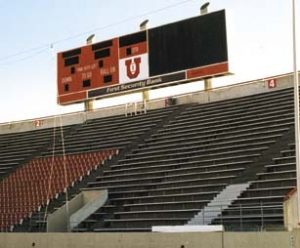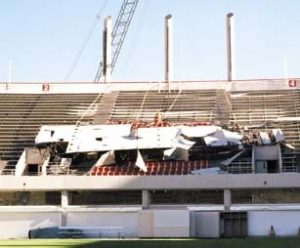How does one design a sign program tailored to meet a customer’s needs from a budgetary, design and advertising standpoint? There are five steps: Survey the site. Account for traffic, physical conditions and ordinance restrictions. Formulate design plans. Install the project. Maintain the signs. Finance the project. Site surveys should be performed by seasoned salespeople or the survey department. Even during the sales survey, a responsible installer should check the location. I remember when a new salesperson performed a survey for a storefront awning, using a land surveyor’s 100-ft. tape to measure in tenths of a foot. Because most sign measurements are in feet and inches, the awning patterns were interpreted in inches, rather in decimals of a foot, and the awnings were manufactured accordingly. To the surprise of the installation department (and the customer), nothing fit. The entire project had to be re-manufactured. Physical conditions Over the past 32 years, I’ve noticed that the installer with the highest IQ retires to the position of site surveyor. However, a qualified sign salesperson often conducts the survey. Ernie Haynes, an account executive at Heath and Co., personally surveyed all the Bob’s Big Boy locations in California. Because he was good, he demanded top dollars. When I asked him how he obtained such good margins on his projects, he wasn’t bashful in saying, "I’m worth it!" Having worked with him for five years and observed his techniques, I realized that his survey saved his customer and his company hundreds of thousands of dollars every year. Every site surveyor has similar equipment, but different techniques, to achieve the same results. To measure an overhead wire or sign cabinet, Bruce Meadowbrooks of Heath and Co. threw a baseball with a string attached by masking tape, then measured the string. For 26 years, I’ve admired Kirk Brimley of Brimley Brothers’ Sign Co. and Young Electric Sign Co. as the premier sign surveyor. Kirk introduced me to the Haga altimeter for measuring angle of elevation and indicating height directly for known horizontal distances or base lengths. When you examine the altimeter, you’ll find four scales engraved on a rotatable horizontal bar. The fifth scale shows the height as a percentage of the distance (for gradients and slopes). The sixth, a topographic scale, is used one chain (66 ft.) from the object. The measurement is taken a distance from the base of the object approximately equal to its estimated height. This distance should be equal to or a multiple of one of the scales by turning the knob. Release the pointer by depressing the button on the side of the case. To achieve a correct alignment, sight the prongs through a pinhole in the eyepiece and scan the object until the prongs’ tips coincide with its upper limits. When the pointer comes to rest, a trigger is depressed to lock the pointer. Add your own height (up to eye level) to the scale to arrive at the height above eye level. If the measurement from the object is in feet, the height is in feet. On larger signs, it’s important to know if the sign’s circuits are 120/240V single-phase (as is the wiring in most residences), 120/208V three-phase (like that of most businesses in the western United States), or 120/277V three-phase with a "high leg" (typically used for lighting loads). Often, the customer’s electrician provides this information. Ordinance restrictions Over the years, I watched Kirk conduct surveys and secure permits. Kirk’s reputation preceded him when the permit department asked if a sign conformed to code. If he said it did, the municipality stamped his permit and drawings on the spot. He could often secure permit approvals over the phone. It’s no wonder the International Sign Assn. (ISA) employed Kirk as vice president of legislation. Often a company is selected to perform the survey because of its competence and authority in a geographic location. Once, Milton Lloyd, president of Heath and Co., told me we had failed to obtain permits for a project in Chicago. When I asked who tried to secured the permit, Milt answered it was Heath’s usual agent. I suggested using White Way Sign as our agent, adding, "They own Chicago!" We did, and in three days, permits were secured. Traffic Is there vehicular and/or walking traffic? Call the department of transportation to secure traffic counts. Maps with the latest traffic count are often published. A trend can be used to make adjustments if a recent count isn’t available. Thus, these three elements — traffic count, physical conditions and ordinance restrictions — are important to the site survey. Don’t send an inexperienced salesperson to do a man’s job. Rather, send him to accompany and observe the professional, sign-site surveyor. Survey Tools The company performing a site survey should have a knowledgeable, experienced staff equipped with the necessary tools, as well as a vehicle that’s appropriate for the terrain. We recommend bringing a digital camera because you can e-mail prints quickly, from Kinko’s if necessary. Also, remember that cell phones allow immediate communications between the surveying crew and office, thereby saving both time and money. If your company is frequently asked to conduct surveys, you might explore buying a Haga altimeter (available at www.benmeadows.com) for easily measuring heights. You’ll also want an electrical "lockout" (www.grainger.com) to prevent accidental tourists from turning on a switchbox for any circuits you’re inspecting. Whether you’re requesting or conducting the survey, don’t forget to call the underground locator service and to research local building and sign codes. Finally, look up. If you see overhead electrical lines within the work area, include a caution note for anyone following you. If lines are very close, ask the electrical company for precautionary guidance and associated costs. Include this precaution in the survey.



 Tip Sheet1 week ago
Tip Sheet1 week ago
 Photo Gallery3 days ago
Photo Gallery3 days ago
 Ask Signs of the Times5 days ago
Ask Signs of the Times5 days ago
 Real Deal2 weeks ago
Real Deal2 weeks ago
 Benchmarks1 week ago
Benchmarks1 week ago
 Photo Gallery2 hours ago
Photo Gallery2 hours ago
 Women in Signs2 weeks ago
Women in Signs2 weeks ago
 Women in Signs1 week ago
Women in Signs1 week ago











